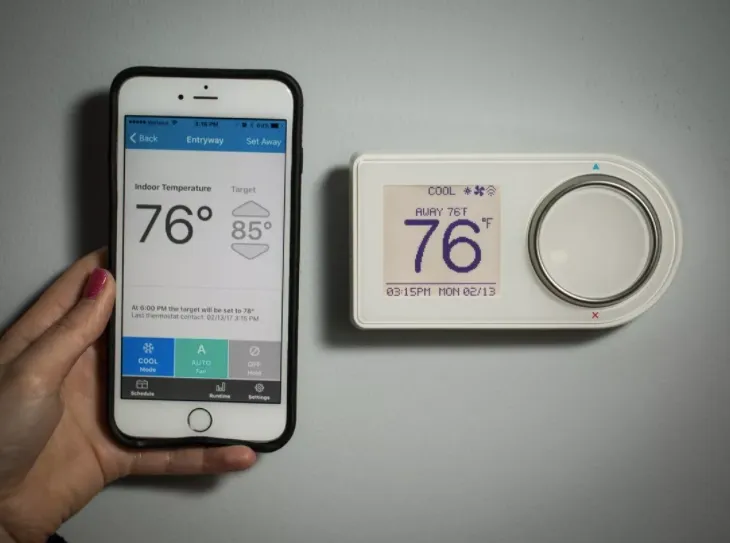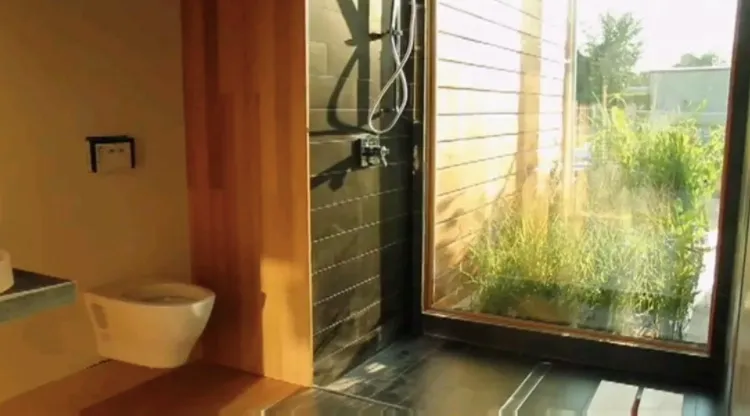Impressive entryways, windows with a view and open floor plans are popular requests when it comes to a new house. But many home shoppers are now looking for green features that can make living a little more eco-friendly — and economical.
If you’re in the market for a new home, here are some green features we can help you look out for in your next home.
Solar panels
Around 47% of millennials think solar panels and efficient energy storage are important features in a new home, according to a survey by Nationwide Mortgages. Going solar isn’t just a good move for the environment, it’s also a good move for your bank balance. Many electric companies will pay solar home owners for any excess energy they create with their panels. When buying a home with solar panels already installed, there are some important questions to ask:
- Were the panels purchased through a solar loan and are they paid off? If not, the home seller is required to pay off the loan on the panels.
- Are the panels on a lease? If the homeowner still owes on a lease contract with a solar company, they may try to pass the contract off to you. This could raise the overall cost of the home, causing you problems with your bank. Be sure to review any lease with your realtor and bank loan representative before making an agreement to purchase a home.
- Are the panels still under warranty? If so, ask how long the warranty lasts.
- How many kilowatts of electricity do the solar units make each month? Once you know this number, take a look at your current electricity bill and compare. Will the solar units meet your needs or will you need to add panels?
Smart thermostats
Another green feature that will save you money are smart thermostats. According to Energy Star, “If everyone used a smart thermostat, we would save 56 trillion BTUs of energy and offset 13 billion pounds of greenhouse gas emissions each year, equivalent to the emissions of 1.2 million vehicles.”
How does such a small device offer such green goodness? It automates the heating and cooling process through smart features like geofencing, remote sensors and more. Many can also be controlled using an app or voice commands through Alexa or Google Assistant, which makes them convenient as well as environmentally friendly.

Tankless water heaters
Tankless water heaters — also known as instantaneous water heaters and on-demand water heaters — make water as you need it, instead of keeping water warm in a tank. As you can imagine, heating water only when you need it is much more efficient.
If you only use 41 gallons or less of hot water each day, tankless water heaters can be 24% to 34% more energy efficient than regular water heaters with tanks. If you use a lot of water, around 86 gallons per day, they are around 8% to 14% more energy efficient, according to the Department of Energy. For supreme energy efficiency, a home with a tankless water heater installed at each hot water outlet can save 27% to 50%.
When you’re buying a home with a tankless water heater, be sure to ask if it’s electric or gas. An electric heater can heat 2 to 5 gallons (7.6 to 15.2 liters) of water per minute while a gas-fired heater can heat 8 to 11 gallons (30.3 to 41.6 liters) per minute.
The problem with a gas-fired heater, though, is it can waste more energy than an electric unit by having a constantly burning pilot light. A gas-fired heater with an intermittent ignition device, is the best choice because it starts up the heating process without a pilot light, maximizing energy savings.
Reclaimed wood
Reclaimed wood is wood salvaged from old buildings. Homes that incorporate this type of wood save trees and keep perfectly good wood out of the landfill. The character of the old wood also adds a special aesthetic quality to the home.
Have your realtor keep an eye out for homes that use reclaimed wood in:
- Flooring
- Wall treatments
- Ceiling treatments
- Fireplace mantels
- Ceiling beams
- Porch columns
Water harvesting systems

There are two types of water harvesting systems that are ideal for anyone who wants a home that’s as green as possible: rain harvesting and gray water harvesting.
Rainwater harvesting systems can be as simple as plastic barrels attached to the gutter system, or as complex as underground storage tanks complete with filters to sanitize the water. The type of gathering system you want in your future home depends on your needs.
If you just want to capture rainwater for your garden during dry times, then a barrel system may be sufficient. On the other hand, if you want to collect enough water to supply your entire household, multiple storage tanks and plumbing to the home would be a better choice.
Gray water harvesting is collecting water from sources such as the kitchen sink and the bathtub for reuse. Before buying a home with a gray water system, be sure to ask exactly how the water is reused. Some systems will collect the water from sinks, showers and tubs and store it for use in toilets or sprinkler systems. More advanced systems will filter the water so that it can be reused for drinking, cooking and bathing.
While gray and rainwater systems seem like a great way to save on your water bill, be wary. In many cases you won’t be able to “go off-grid.” Some towns require residents pay for city-supplied water, whether they use it or not.
While you may be unlikely to find a home that incorporates all of these green features, you can use this list to decide which ones are the most important to you. Then, contact your realtor to find a home that meets your needs.
By Alina Bradford and Megan Wollerton for Cnet Home 4/22/2021
Original Article HERE
For more information, please contact us here.



